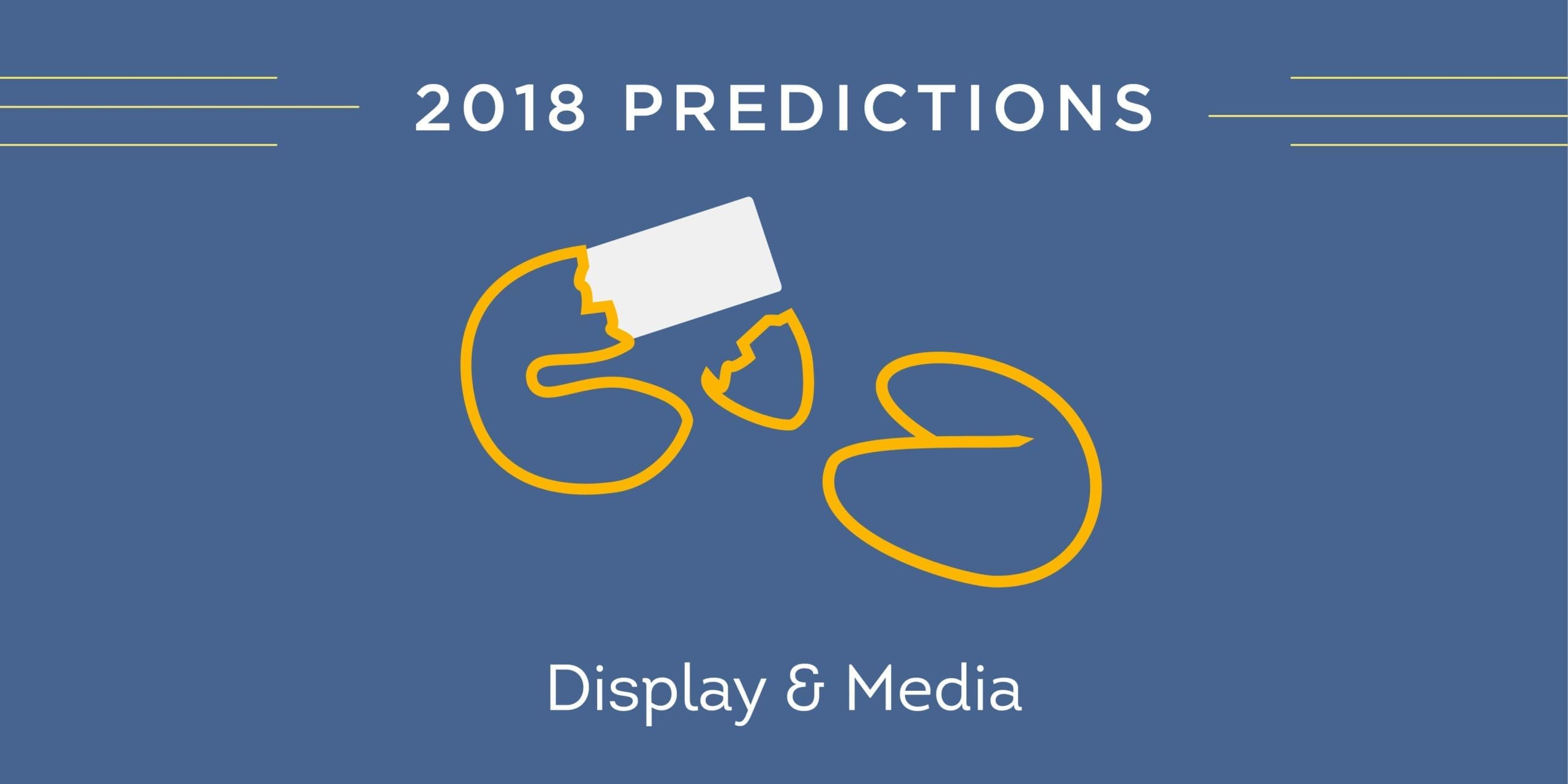
Navigate an unpredictable landscape with actionable, data-driven strategies tailored for your business from the brand down to the local level.

Display media has always been an exciting, dynamic marketing channel. With the ability to place media in front of almost any target audience, a multitude of different creative options available and nearly limitless data sets to buy and optimize against, display remains a critical (and ever-changing) part of the marketer’s toolkit.
In 2017, we heard all about how Russians tried to sway the US Presidential Election via specifically- targeted buys on social networks. We also saw more vendors in the marketplace offering data-first solutions for media targeting and buying, touting the superior decision-making abilities of their algorithms and AI as compared to human buying and optimization. Many brands continued their display buying with a heavy programmatic element, while others adjusted their display mix away from such a significant reliance on programmatic, due to concerns about transparency and fraud.
So, what will 2018 bring?
As maligned as it has been due to fraudulent traffic, bad content and news items including the Russian election meddling, highly targeted, data-first/machine-based media buying will still be a critical part of the marketer’s media mix. The wealth of audience data available to marketers for targeting, combined with the amount of data marketers can get back about their customers from these programs, makes this type of media buy highly effective, as it limits wasted media impressions and allows for more relevant, audience-aligned messaging.
However, I predict more and more marketers will want to take full control of their media and audience data, expecting transparency regarding where their media buys and placements are served, what the viewability of their impressions were and bringing on their own data management platforms to manage their audience data (as opposed to relying on media platforms’ DMPs). As marketers take more control of their buying environments and their data, it will allow them to draft strategies and tactical plans that are incredibly targeted and impactful, and will also mean that agencies and publishers will need to be able to offer the full view of their buys to buyers/clients.
At DAC, we believe where you are is as important as who you are. Any brand that has physical brick-and-mortar locations (in addition to an online presence), or service offerings in specific geographies, can benefit from a local strategy that places specific types of media buys in specific geographic locations. With audience targeting, many brands have focused more on the person (demographics, psychographics, etc.) than their location. At DAC, we’ve seen double-digit performance growth from locally-targeted strategies that perfectly align the ad creative to the audience and their geography, and drives them to landing pages that mirror the geographic messaging they saw in the ad. We also find valuable performance in locally-focused tactics and techniques, such as geo-fencing, that deliver messages to users when they’re near a physical location, and create rich experiences for users that are unique for every location. Many clients and brands are seeing the value in local campaigns, and I expect this trend will continue to be a significant focal point of any enterprise/brand-level media plan in 2018.
Subscribe to our monthly newsletter.
I have written before about how AI is already at play in many of the marketing suites and tools used by marketers today. But AI in the way most people think about it — as as something that can understand inputs and outputs, and make increasingly intelligent decisions as it continues to learn in a human-like fashion — is something that hasn’t yet seen its full potential in digital media. We have heard value propositions from many companies that AI is what fuels their platform or their algorithm — and they’re not wrong. But we haven’t yet seen significant uptake in brands that rely on AIs to optimize their entire marketing suite end-to-end.
Adobe is betting the farm on this, so to speak, with their entire marketing cloud connected by their “Sensei” AI. Other, smaller players such as Albert have entered the playing field as well, winning awards for innovation but have yet to prove their viability in the marketplace. As more and more marketers begin to explore the various types of artificial intelligence and where they can be deployed to improve digital marketing programs, I expect to see an increase in brands that are willing to test allocating greater portions of their budget on AI-driven programs, tools and platforms — allowing their marketing teams and agency partners to spend more time on strategic decision-making, testing and iteration.
As always, I predict that 2018 will be a year when many changes occur in the display landscape, from new providers and vendors entering the market to a push for increased transparency from advertisers and publishers. It will pay dividends to keep on top of all the new offerings, testing and learning about things that may be viable for your business. One thing can certainly be guaranteed though: the display landscape will not be the same in 2019!
Jenna Watson is DAC’s VP of Digital Media and is based out of Chicago. To learn more about 2018 digital marketing opportunities, please get in touch or connect with Jenna on LinkedIn.
Navigate an unpredictable landscape with actionable, data-driven strategies tailored for your business from the brand down to the local level.
Navigate an unpredictable landscape with actionable, data-driven strategies tailored for your business from the brand down to the local level.
Navigate an unpredictable landscape with actionable, data-driven strategies tailored for your business from the brand down to the local level.
Subscribe to our monthly newsletter.